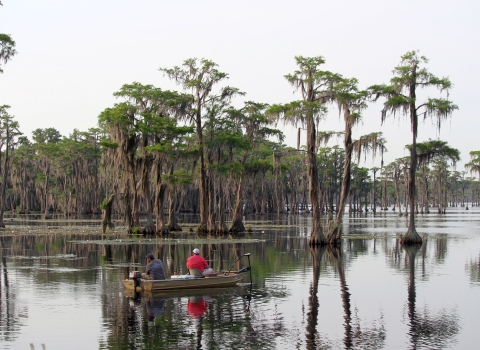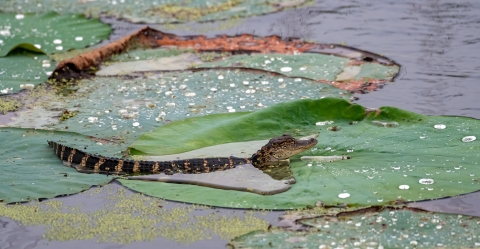Visit Us
Whether fishing or paddling, or just watching the sunset from the pier, visitors to Banks Lake can enjoy a unique landscape dominated by moss-draped cypress ringed with water lilies. The best way to experience Banks Lake is from the water, and each season touches the lake with its own mood. Look closely at each tree. Dragonfly nymphs shed their larval skeletons on the cypress bark as they emerge from the water. Spider webs sparkle with dewdrops on a foggy morning. Songbirds and ospreys nest in the moss and treetops. Favored fishing holes yield bream and bass - and a few ten-pounders!
Location and Contact Information
About Us
Banks Lake is a natural Pocosin or Mill Pond, probably created by tidal action of the ocean and shaped by a more temperate climate thousands of years ago The 4049 acre site protects a unique environment and diverse wildlife.
What We Do
Wildlife conservation is at the heart of the National Wildlife Refuge System. It drives everything on U.S. Fish and Wildlife Service lands and waters managed within the Refuge System, from the purposes for which a national wildlife refuge national wildlife refuge
A national wildlife refuge is typically a contiguous area of land and water managed by the U.S. Fish and Wildlife Service for the conservation and, where appropriate, restoration of fish, wildlife and plant resources and their habitats for the benefit of present and future generations of Americans.
Learn more about national wildlife refuge is established to the recreational activities offered to the resource management tools used. Using conservation best practices, the Refuge System manages Service lands and waters to help ensure the survival of native wildlife species.
Our Species
The refuge was established for the protection and conservation of this unique environment as well as migratory and resident wildlife.




